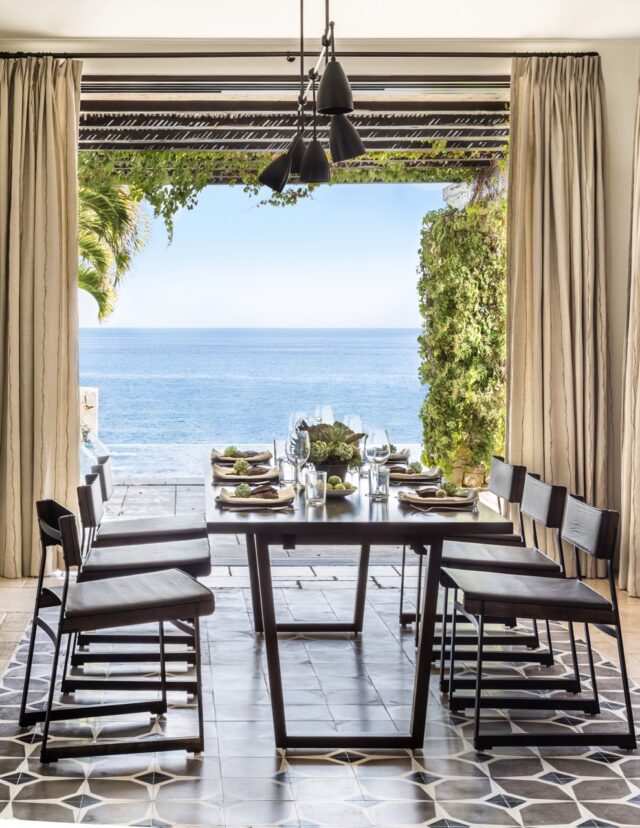
By Alison Davin
The essence of designing with natural elements is a seamlessness between indoors and outdoors: think a lack of doors, a continuous flow of air, a blending into the natural landscape, and an overall feeling of wellness that can only come from nature. While only a select (and lucky) few of us live in a climate that allows for that experience year-round, there are certainly tenets of outdoor living that you can incorporate into your own home. It’s a matter of utilizing materials that come straight from the earth that can be reused or repurposed—so that the transition not only looks natural but feels natural too.
Think of it as borrowing from the earth and giving back when you’re done. Here’s how to design beyond the walls of your home and integrate your outdoor environments with wellness in mind.
Natural materials are good indoors and even better outdoors. There are some subtleties to designing an outdoor space versus indoor. For one, you want to move away from the light outside, rather than toward it as you would inside. And you do need to keep weather-resistance in mind. But in general, the practices you apply indoors should be used outdoors — especially since the furnishings you place outside can affect the greater atmosphere. Instead of plastic or pressure-treated wood, choose materials that come from the earth and look even more at home in their natural environment. Here are the healthiest options for air quality.
Hardwoods
For wooden furniture and decks that weather well, teak and cedar are the gold standard. Ipe and redwood are also solid choices for decking.
Wovens
Rattan or wicker furniture is a great way to add texture to a more covered area. Reed coverings are inexpensive and make great awnings, as they let light filter through.
Metal
For an ultra-durable option, go for aluminum, stainless steel, or any metal that’s been treated for outdoor use. I particularly love French bistro chairs and tables for outdoor dining, as they’re lightweight and can easily be moved around.
Lava Stone
Lava stone, bluestone, and limestone are go-tos for anchoring or delineating an area. As a bonus, they will hold up to heavy wear and tear.
Concrete
Basically a mixture of stone, sand, and water, this low-maintenance material gets stronger over time and is naturally resistant to erosion.
Tile
Hand-painted terra-cotta tiles are a chic way to define a space. I use them frequently in outdoor dining areas and around pools.
From Live Natural by Alison Davin with Cheryl Maday. Photography by Lisa Romerein. Reprinted by permission of Gibbs Smith Books. Available for preorder on amazon.com; juteinteriordesign.com



